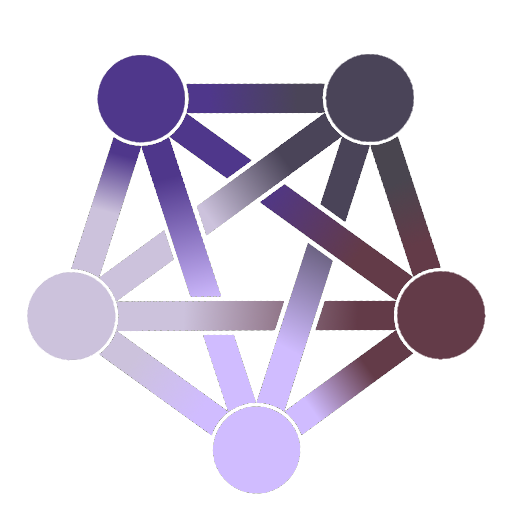I feel like since that’s a very useful product it will not be made available to me.
It’ll be kept within product marketing and, I dunno how, but it would absolutely be used to see what they can raise prices on
I want said AI to be open source and run locally on my computer
It’s getting there. In the next few years as hardware gets better and models get more efficient we’ll be able to run these systems entirely locally.
I’m already doing it, but I have some higher end hardware.
Could you please share your process for us mortals ?
Stable diffusion SXDL Turbo model running in Automatic1111 for image generation.
Ollama with Ollama-webui for an LLM. I like the Solar:7b model. It’s lightweight, fast, and gives really good results.
I have some beefy hardware that I run it on, but it’s not necessary to have.
Depends on what AI you’re looking for. I don’t know of an LLM (a language model,think chatgpt) that works decently on personal hardware, but I also haven’t really looked. For art generation though, look up automatic1111 installation instructions for stable diffusion. If you have a decent GPU (I was running it on a 1060 slowly til I upgraded) it’s a simple enough process to get started, there’s tons of info online about it, and it’s all run on local hardware.
I don’t know of an LLM that works decently on personal hardware
Ollama with ollama-webui. Models like solar-10.7b and mistral-7b work nicely on local hardware. Solar 10.7b should work well on a card with 8GB of vram.
If you have really low specs use the recently open sourced Microsoft Phi model.
I can run a pretty alright text generation model and the stable diffusion models on my 2016 laptop with two GTX1080m cards. You can try with these tools: Oobabooga textgenUi
Automatic1111 image generation
They might not be the most performant applications but they are very easy to use.
You seem to have missed the point a bit
Just read it again and you’re right. But maybe someone else finds it useful.
I do, so thank you :)
deleted by creator
Funny how these comments appeared only today in my instance, I guess there are some federation issues still
new phone who dis?
“I wish I had X”
“Here’s X”
What point was missed here?
The post “I wish X instead of Y”
The comment: “And run it [X] locally”
The next comment: “You can run Y locally”Also the one I told this literally admitted that I was right and you’re arguing still
I want mine in an emotive-looking airborne bot like Flubber
This technology will be running on your phone within the next few years.
Because like every other app on smartphones it’ll require an external server to do all of the processing
I mean, that’s already where we are. The future is going to be localized.
Yeah if your willing to carry a brick or at least a power bank (brick) if you don’t want it to constantly overheat or deal with 2-3 hours of battery life. There’s only so much copper can take and there are limits to minaturization.
It’s not like that though. Newer phones are going to have dedicated hardware for processing neural platforms, LLMs, and other generative tools. The dedicated hardware will make these processes just barely sip the battery life.
wrong.
if that existed, all those AI server farms wouldn’t be so necessary, would they?
dedicated hardware for that already exists, it definitely isn’t gonna be able to fit a sizeable model on a phone any time soon. models themselves require multiple tens of gigabytes of storage space. you won’t be able to fit more than a handful on even a 512gb internal storage. the phones can’t hit the ram required for these models at all. and the dedicated hardware still requires a lot more power than a tiny phone battery.
Those server farms are because the needs of corporations might just be different from the needs of regular users.
I’m running a 8 GB LLM model locally on my PC that performs better than 16 GB models from just a few months ago.
It’s almost as if technology can get better and more efficient over time.
A lot of it can if you have a big enough computer.
Hey me too.
And I do have a couple different LLMs installed on my rig. But having that resource running locally is years and years away from being remotely performant.
On the bright side there are many open source llms, and it seems like there’s more everyday.
Ha. Lame.
Edit: lol. Sign out of Google, nerds. Bring me your hypocrite neckbeard downvotes.
I want some of whatever you have, man.
Reckless disregard for the opinions of the fanatically security and privacy conscious? Or just a good-natured appreciation for pissing people off? :)
Drugs. I want the drugs.
The bad news is the AI they’ll pay for will instead estimate your net worth and the highest price you’re likely to pay. They’ll then dynamicly change the price of things like groceries to make sure the price they’re charging will maximize their profits on any given day. That’s the AI you’re going to get.
If capitalism brought me into this world, will it also take me out of it?
Are you subscribed to Existence Premium or just Basic?
In 977 years, a suicide booth will cost 25¢
An people are complaining about inflation…
You are (currently) more profitable alive than dead so… no, now get back to work!
Capitalism has brought about as many people to this world as any Vampires have.
Damn that’s depressing. :(
I heard they do something like this on Uber already.
The prices will automatically adjust like an Uber algorithm for supply and demand, so as people buy the item it keeps going up and when people stop buying it if decreases slowly.
That is the “apps” you will get. But there will always be an open source version that will do what the comunity need and wants.
I hope you’re right. I don’t think you’re right, but i hope you’re right.
AI could do this. Conventional programming could do it faster and better, even if it was written by AI.
It’s an important concept to grasp
Cameras in your fridge and pantry to keep tabs on what you have, computer vision to take inventory, clustering to figure out which goods can be interchanged with which, language modeling applied to a web crawler to identify the best deals, and then some conventional code to aggregate the results into a shopping list
Unless you’re assuming that you’re gonna be supplied APIs to all the grocery stores which have an incentive to prevent this sort of thing from happening, and also assuming that the end user is willing, able, and reliable enough to scan every barcode of everything they buy
This app basically depends on all the best ai we already have except for image generation
Rolling this out for tools and parts at my work. Tool boxes with cameras in the drawers to make sure you put it back. Vending machines for parts with auto order.
Cameras and computer vision aren’t necessary. Food products already come with upcs. All you need is a barcode reader to input stuff and to track what you use in meals. Tracking what you use could also be used for meal planning.
Yeah, I did think of the barcode approach, but I didn’t think anyone would be willing to scan every item, which is why I ignored it
However, revisiting this question made me realize that we could probably have the user scan receipts. It would take some doing but you could probably extract all the information from the receipt because it’s in a fairly predictable format, and it’s far less onerous.
OTOH, you still have to scan barcodes every time you cook with something, and you’d probably want some sort of mechanism to track partial consumption and leftovers, though a minimum viable product could work without that
The tough part, then, is scouring the internet for deals. Should be doable though.
Might try to slap something together tonight or tomorrow for that first bit, seems pretty easy, I bet you’ve got open source libraries for handling barcodes, and scanning receipts can probably just be done with existing OCR tech, error correction using minimum edit distance, and a few if statements to figure out which is the quantity and which is the item. That is, if my adhd doesn’t cause me to forget
OTOH, you still have to scan barcodes every time you cook with something, and you’d probably want some sort of mechanism to track partial consumption and leftovers, though a minimum viable product could work without that
If you can also keep recipes in the system you could skip scanning the barcodes here. You’d just need to input how many servings you prepared and any waste. Even if the “recipe” is just “hot pocket” or something. If the system knows how much is in a package it can deduct what you use from the total and add it to the list when you need more.
Tracking what you use would be a lot easier with AI. Then you wouldn’t have to keep a barcode scanner in the kitchen. You could just have a camera pointed at your food prep space
is AI good enough to manage that with just a camera? how would it determine how much of a given product you uses? Like if you dump a cup of flour in a bowel, how does it know how much that was.
If you have to point the product in front of the camera to register it anyway, might as well use a barcode reader anyway because it’s the same thing at that point just without the risk of the AI misidentifying something.
I think you can achieve a similar result by having one giant DB so we can average out general consumption and then have a personal/family profile, where we in the first place manually feed the AI with data like, what did we bought, exp date, when did we partly or fully consume it. Although intensive at first I think AI will increasingly become more accurate whereby you will need to input less and less data as the data will be comming from both you and the rest of the users. The only thing that still needs to be input is “did you replace it ?”
This way we don’t need cameras
I’m stoked that you’ve got it all hammered out, let me know when you’re done.
Sure no problem, I just need you to puch in some data manually so we can get started. Can you get thid stack done by tomorrow? Awesome, see you tomorrow!
Oh, so you’re saying that the only data the algorithm needs in the limit is whether or not the user deviated from the generated shopping list, and if so, how, right?
This is true, it’s just a bit difficult to cross the gap from here to there
I’m sure there are companies who’d love to develop something like this. And collect that information about exactly what groceries you currently have and statistics of how you consume them, so they can sell it to advertisers. Not advertisers that sell these groceries, of course - for these the AI company could just make the AI buy them from suppliers that pay them.
They already exist and have been doing this for a long time, they are just using dumber versions of deep learning than what we have right now.
Less about giving your personal information to an advertiser though and more about using aggregate data trends to guide marketing efforts.
Like if you know buns and hotdogs sell like crazy the week before July 4th merchandizing bundles of both that override brand purchase intent on favor of convenience and discount.
An example of this kind of market research in action would be a clothes store that knows 20% of its sales were to people who shopped the day before they came back to buy offering 48hr exit coupons that would be valid the next day for a limited time.
The personalized data is used in house at these aggregators to market to you directly, such as the war and peace length personalized coupons on receipts where they’ve been contracted by the retailers.
Not just advertisers, it would also get sold to food manufacturers and product developers. This is not so bad though cause it helps new products come out that might be in line with what you want
This is what “loyalty” cards are for. They give you a little discount in exchange for being able to track your purchases.
I want AI to control traffic lights so that I don’t sit stopped through an entire cycle as the only car in a 1 mile radius. Also, if there is just one more car in line, let the light stay green just a couple seconds longer. Imagine the gas and time that could be saved… and frustration.
That’s already a thing, though it isn’t AI driven. Many intersections have sensors that detect traffic and can change the lights quickly or let them stay green longer if you’re approaching it. It’s only getting more advanced as time goes on.
As always, such systems need infrastructure investment to make them widespread.
You make it sound like the AI traffic lights will just magically download themselves onto the grid?
How do I make it sound like that? You first need to build traffic light and road infrastructure that can handle advanced traffic flow, along with the processing power to make decisions based on sensor readings and rules.
The software (AI is kinda overkill) exists to handle and optimise traffic flow over an entire city, but your software does not matter if there are insufficient sensors for the software to make decisions, or too few controllable lights to implement decisions (or both).
What they’re saying is if money was adequately invested in infrastructure, these old systems would have been upgraded 10 or 20 years ago and AI would not be necessary at all.
Thank goodness. until every intersection becomes this intuitive, I will only continually notice the ones that hold me hostage through several cycles and /or don’t even notice I’m there waiting at a red light for 5 minutes at 3am when I’m the only car there.
Doesn’t need AI, and there are countries that already have a system in place with the same result. Unsurprisingly the places with more focus on pedestrian, cyclist, and public transit infrastructure have the most enjoyable driving experience. All the people that don’t want to drive will stop as soon as it is safe and convenient, and all those cars off the road also help with this because the lights will be queued up with fewer cars.
Unfortunately, the US is king of the suburbs and I don’t see that changing any time soon.
I know you don’t need AI to do this but I think AI would do a great job if properly employed.
That’s been a thing for decades already in a lot of places.
And it certainly didn’t need any “AI” to work.
Nope, but it can be improved significantly by adopting it properly though.
To be fair, there are already more intelligent traffic light systems that use sensors in the road to see if there is traffic sitting at the lights, combined with push buttons for pedestrians and cyclists. These can be combined with sensors further up the road to see if more traffic is coming and extend the periods of green light for certain sides. It may not be perfect and it may require touching up later after seeing which times could be extended or shortened. It’s not AI but it works a lot better than the old hard coded traffic lights. Here in the Netherlands there are only a handfull of intersections left that still have the hard coded traffic lights.
You and Sarah Radz and everyone else here with brilliant practical ideas need to submit your resumes to the Silicon-Valley-esque corporations that comandeer such industries, be hired on as brains.
Thank you for the kindness. At least I think it’s kind. I don’t know who Sarah Radz is. So I choose to accept this as a compliment.
There is another solution: not use car
That would be great, but it’s just not practical in many places.
I looked up how to get to work using public transportation once. It was 3 hours using 3 busses and a half hour walk. LOL. I could literally do it in two hours using a bike. But I’m just not willing to spend 4 hours a day getting to work and back. I don’t know many that would of they had a choice. It’s half an hour drive for me, but 22 miles, mostly interstate.
That’s a problem, not a solution
People who have only lived in car centric cities cannot fathom how this is better
It’s not that I can’t fathom how it could be better, I literally wish I could get rid of my car.
I literally can’t. I live far enough away from my job that not having a car to get there every day isn’t an option, I can’t move close enough to my job to eliminate a car, and even if I did, I’m only making the drive further for my wife. We don’t live within walking distance of a grocery store. I genuinely need a car. My wife needs one too. I don’t live in a city with with even shitty options for public transit. It’s just not an option. My wife doesn’t work in the same city she works in, there is no bus, and the nearest bus stop to my job is a 45 minute walk from my job, and a 2 hour bus trip.
It’s a 10 minute drive for both of us.
If I could sell my car I fucking would. I love my car, but I’d give it up in a heartbeat if it were an option. I just don’t have the option. This is without children. When a child is thrown in to the mix we will only depend on having two cars more.
Our mothers are aging, they live here and don’t have other support. She has licenses that lock her in to this state. We aren’t moving, and this city is a car city.
google used to do this type of stuff then you get SEO shit and in the same way people would try to game the system and ruin it
Aye, this be the problem. As long as there is a profit motive the AI is going to steer you to whatever makes them money, be it whoever works the SEO game or pays for API access.
That’s why you charge the end user of the AI: it keeps your own interests aligned with theirs.
Just don’t make grocerybot a free service. Make it a paid service, and then it works.
Relevant XKCD: https://xkcd.com/1425/
I mean, when that xkcd was made, that was a hard task. Now identifying a bird in a picture can be done in realtime on a raspberry pi in a weekend project.
The problem in the op isn’t really a limitation of AI, it’s coming up with an inventory management system that can detect low inventory without being obtrusive in a users life. The rest is just scraping local stores prices and compiling a list with some annealing algo that gets the best price to stops ratio.
It’s too bad the actual users will be the grocers price fixing for maximum profit.
Damn
Hey look at that, you spotted the real problem
I see this complaint everywhere. People mentioning business setting prices to maximize profits, like it’s a bad thing.
In a market with competition, that maximum profit point is also the point of maximum value to the consumer. Because business is a negotiation, not a dictatorial relationship.
I don’t understand why people don’t understand this.
I think you focused too much on the details…
AI image manipulation is entirely based in a computer where an image is processed by an algorithm. Grocerybot involves many different systems and crosses the boundary between digital and physical. The intertwined nature of the complexity is what makes it (relatively) difficult to explain.
We were already robbed of the brief value stage of AI, it came out of the gate with a corporate handler and a ™
The internet had a stretch where it was just useful, available and exciting. This does not.
Local models are a thing, and GPT is extremely useful in some cases, even with the corporate handholding. I find the whole space super exciting, personally.
The accessibility of local models is nowhere near what the early web was. We could ALL have a geocities website and our own goofy “corner of the internet” without the extra bullshit.
be the person that makes local ai’s the new geo cities. Make the tech accessible bro! I will invest in your crowdfund
.
Ø.
. p
after due dilligence only… that is
deleted by creator
This is surprisingly difficult problem because different people are okay with different brand substitutions. Some people may want the cheapest butter regardless of brand, while others may only buy brand name.
For example my wife is okay with generic chex from some grocery stores but not others, but only likes brand names Cheerios. Walmart, Aldi, and Meijer generic cheese is interchangable, but brand name and Kroger brand cheese isn’t acceptable.
Making a software system that can deal with all this is really hard. AI is probably the best bet, but it needs to be able to handle all this complexity to be useable, which is a lot of up front work
As long as the AI has access to their ongoing purchase histories it’s actually quite easy to have this for day to day situations.
Where it would have difficulty is unexpected spikes in grocery usage, such as hosting a non-annual party.
In theory, as long as it was fine tuned on aggregate histories it should be decent at identifying spikes (i.e. this person purchased 10x the normal amount of perishables this week, that typically is an outlier and they’ll be back to 1x next week), but anticipating the spikes ahead of time is pretty much impossible.
Both of these problems could feasibly be solved by user input. If you had the ability to set rules for your personal experience, problems like that would only last as long as it takes the user to manually correct.
Like, “Ai, I bought groceries for a party on March 5th. Don’t use that bill to predict what I need” or “stop recommending butter that isn’t this specific brand”
Also quite difficult from a vision perspective. Tons of potential object classes, objects with no class (e.g., leftovers, homemade things), potential obfuscation if you are monitoring the refrigerator/cabinets. If the object is in a container, how do you measure the volume remaining of that substance? This is just scratching the surface I imagine. These problems individually are maybe not crazy challenging but they are quite hard all together.
You don’t use vision, or if using it you are only supplementing a model that is mostly using purchase histories as the guiding factor.
But you actually need vision because purchase history is not indicative of my future purchases. Sometimes I buy butter and eat it in a 3 days and buy again. Sometimes I’m not in the mood and have a chunk of butter to sit in my fridge for 3 weeks. It’s honestly totally random for a lot of things. It depends only on my mood at the moment.
You’d be surprised at how many of those things you think are random would actually emerge as a pattern in long enough purchase history data.
For example, it might be that there’s a seasonality to your being in the mood. Or other things you’d have brought a week before, etc.
Over a decade ago a model looking only at purchase history for Target was able to tell a teenage girl was pregnant before her family knew just by things like switching from scented candles to unscented.
There’s more modeled in that data than simply what’s on the receipt.
I agree, in the context of the tweet, that purchase history is enough to build a working product that roughly meets user requirements (at least in terms of predicting consumed items). This assumes you can find enough purchase history for a given user. Even then, I have doubts about how robust such a strategy is. The sparsity in your dataset for certain items means you will either a.) be forced to remove those items from your prediction service or b.) frustrate your users with heavy prediction bias. Some items also simply won’t work in this system - maybe the user only eats hotdogs in the summer. Maybe they only buy eggs with brownie mix. There will be many dependencies you are required to model to get a system like this working, and I don’t believe there is any single model powerful enough to do this by itself. Directly quantifying the user’s pantry via vision seems easy in comparison.
There could be an easy party mode button in which it just ignores the usual and picks likely food options for a party.
“Lutefisk?? GroceryBot!”
:::laugh track:::
Honestly I would be perfectly happy with the service like this, even if I had to manually input what groceries I need. It’s still an incredibly complex problem though. AI is probably better suited for it than anything else since you can have iterative conversations with latest generation AIs. That is, if I tell it I need cereal, it looks at my purchase history and guesses what type of cereal I want this week, and adds it to my list, I can then tell it no, actually I want shredded mini wheats.
So it would probably have to be a combination of a very large database and information gathering system with a predictive engine and a large language model as the user interface.
AI does exactly this. Like exactly.
Wasn’t the first part what “smart fridges” were supposed to solve like 10 years ago?
No. That’s just what they wanted you to believe. All they really did was find a way to separate people from more money.
I found out two people in my family bought smart fridges and both listed watching tv and listening to music as reasons for purchase. Not the only ones mind you, but some of the first ones mentioned. I don’t get it.
So many people in this thread saying “you can already do this if you just do all these extra steps” like avoiding extra work isn’t the whole point.
Exactly. But also I’m blown away that most grocery stores don’t list inventory and prices on the website. I can only think this is because they don’t want to show prices in an attempt to get you to go to the store.
They absolutely don’t want to make automatic comparison shopping that easy. The goal of every grocery store is to get you there with one or two specific good deals they advertise and then have you do the rest of your shopping there because nobody wants to go to a second store and MAYBE get a slightly better deal but also maybe get a worse deal.
But also I’m blown away that most grocery stores don’t list inventory and prices on the website. I can only think this is because they don’t want to show prices in an attempt to get you to go to the store.
yuuup.
I mean… Yeah? Grocery stores want you in the store. If they didn’t they’d be shipping only warehouses.
I just mean that they must have done some research that says it is more profitable to only list a few prices instead of everything.
And also the hottest thing a woman can say:
“It runs on lokal hardware”Men want one thing and it’s fucking disgusting.
And if it requires an API code to run on someone else’s shit then it can go fuck itself. I want to self-host my AI and run it from my own domain I bought cheap during a holiday sale.
I’m sure Sara is not ready to be served the optimal outcome from a competitive multi-agent simulation. Because when everyone gets that AI, oh boy the local deals on groceries will be fun.
The equilibrated state your imagining never happens. This is like talking about when the ocean finally levels out. The ocean’s never going to level out. There will always be waves to surf.
I want both.





















